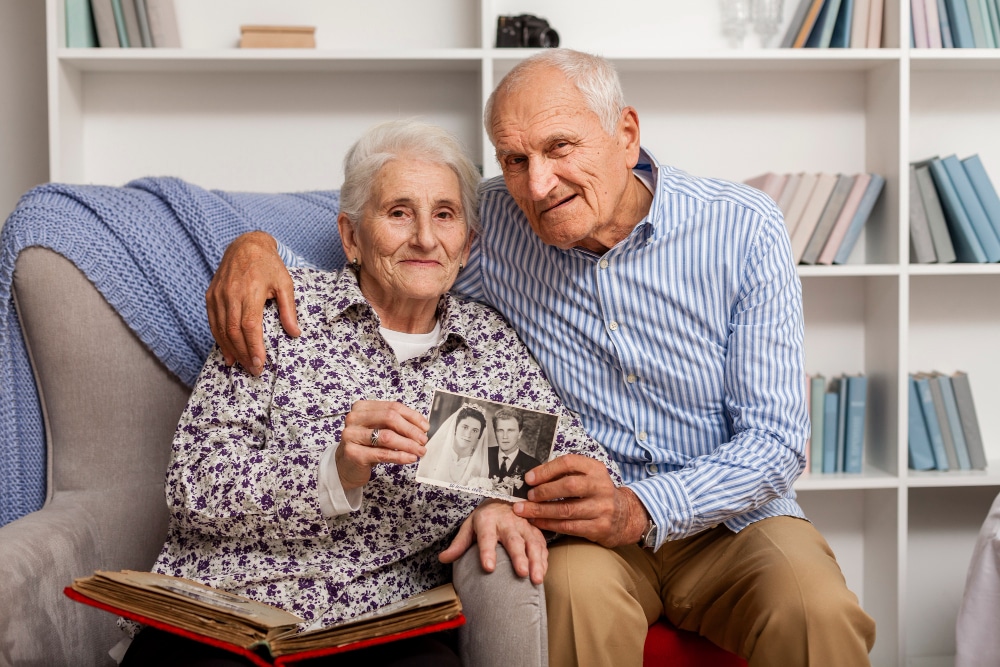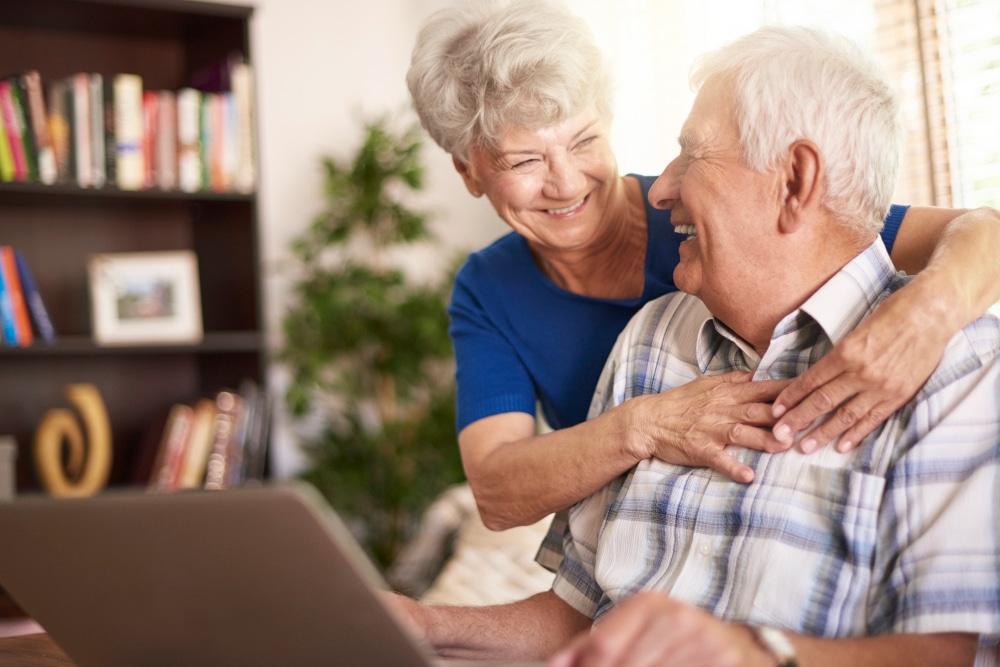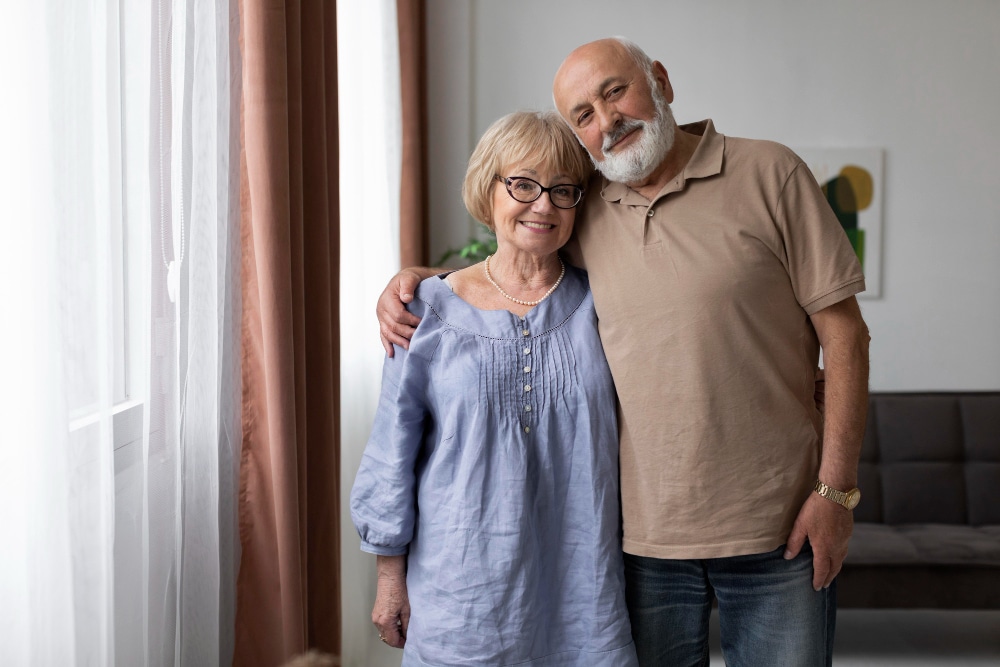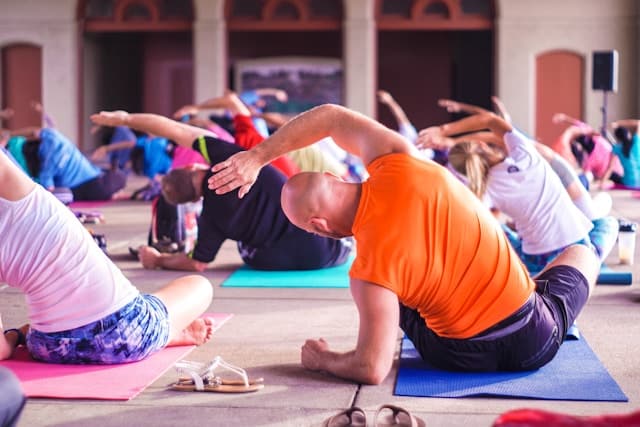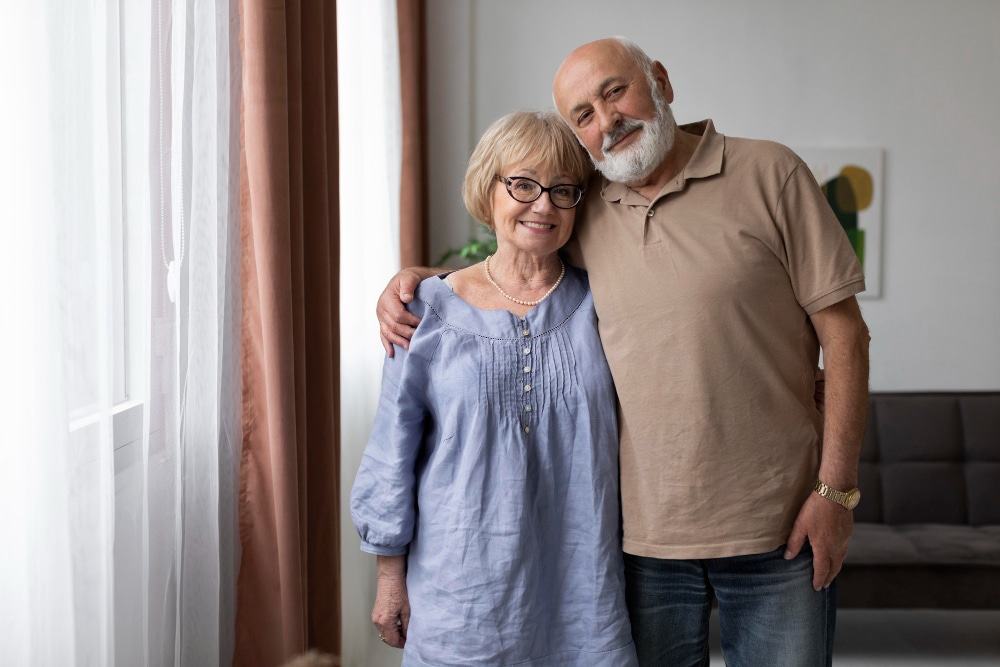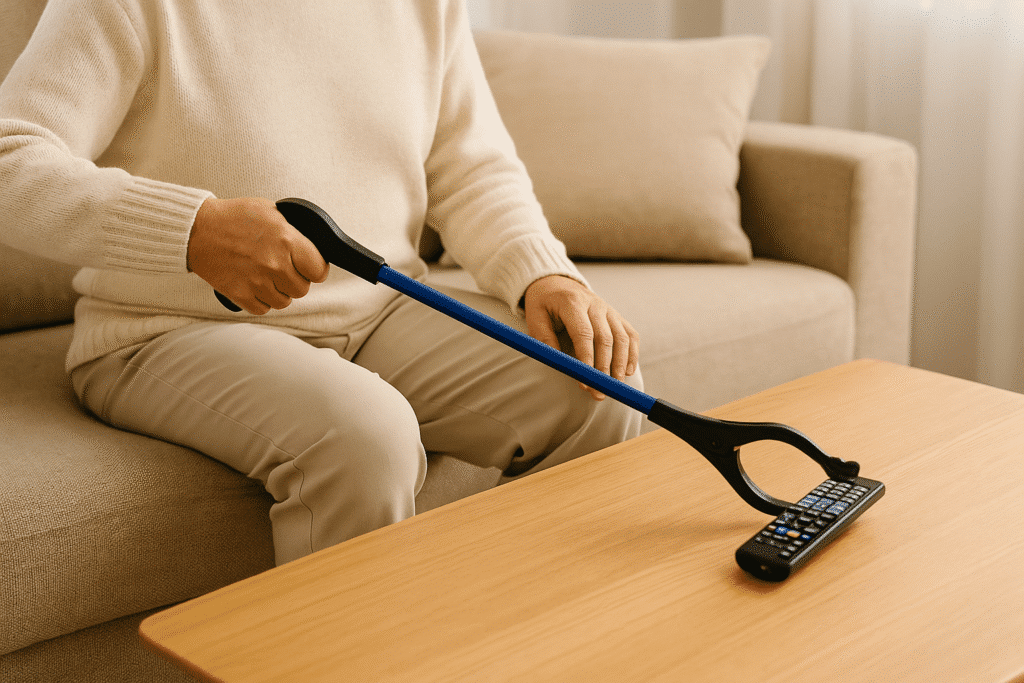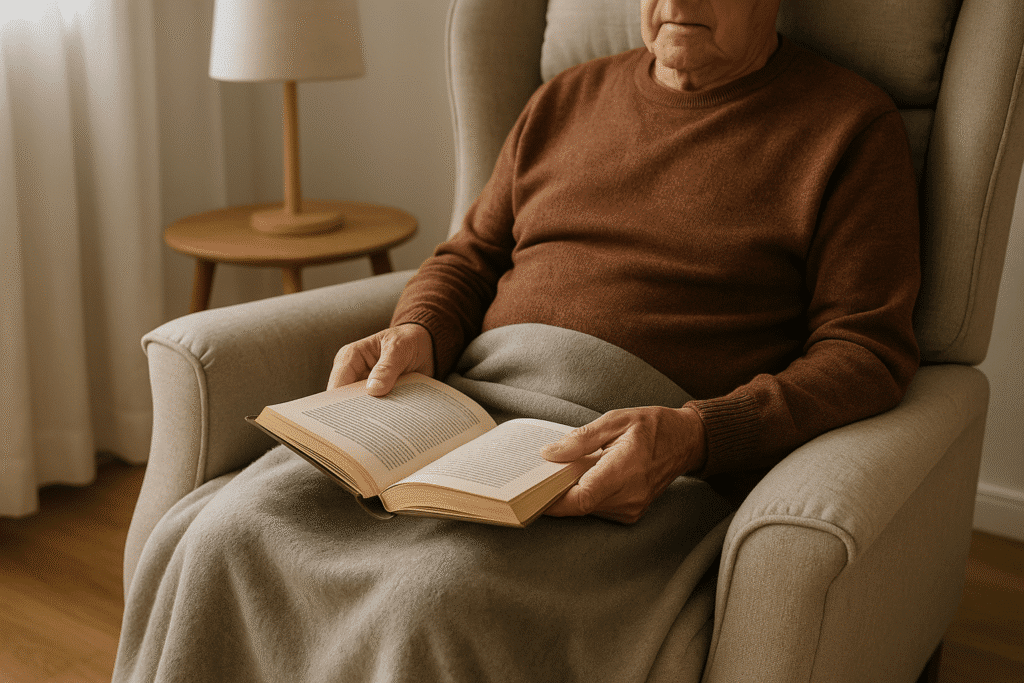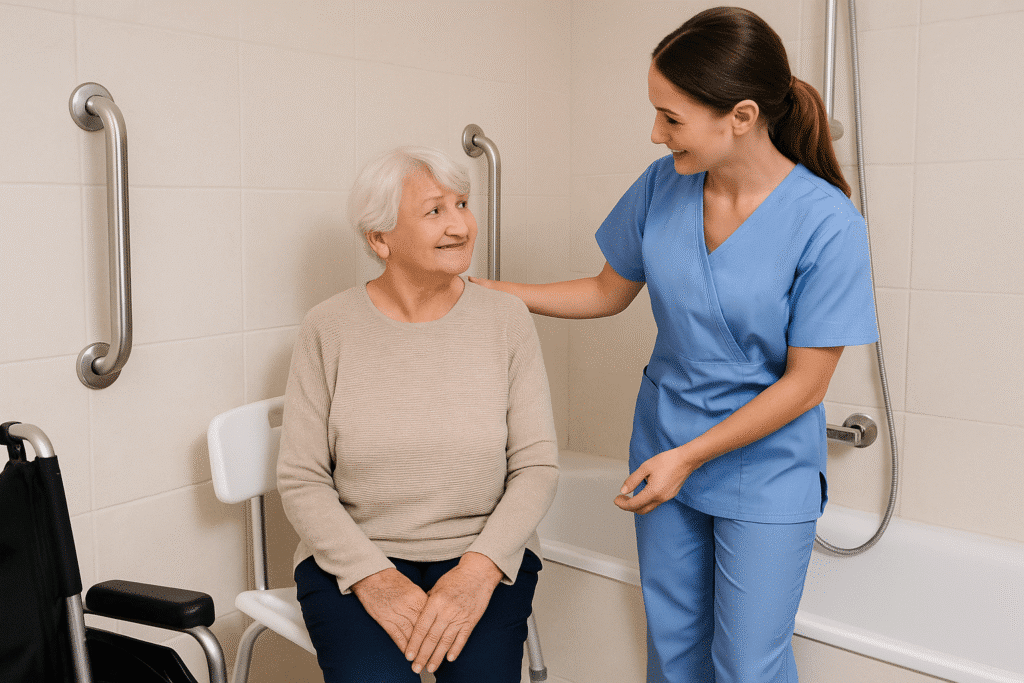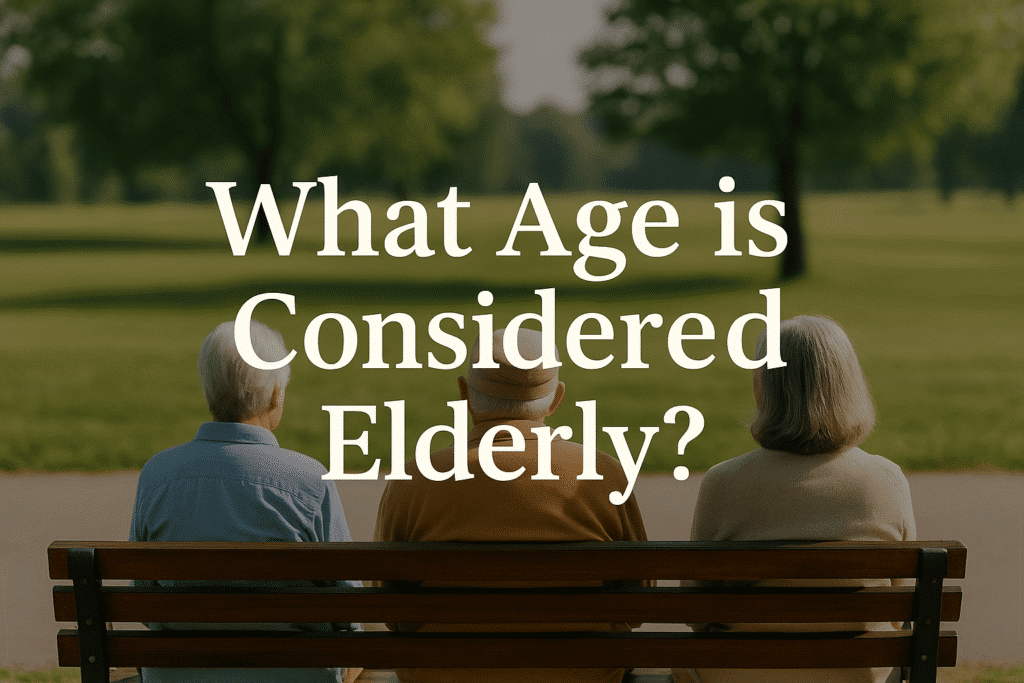As we age, everyday spaces can become full of hidden hazards.
Making a home safe for elderly loved ones is one of the most important steps in supporting independence, preventing falls, and reducing the risk of injury.
Whether you’re caring for a parent or planning for your own future, small changes can make a big difference in creating a secure and comfortable home environment.
Key Takeaways:
- Most senior falls happen at home, especially in the bathroom or on stairs.
- Simple upgrades like grab bars, lighting, and non-slip mats greatly reduce fall risks.
- Safe home design helps seniors stay independent and age in place with confidence.
- A professional home safety assessment can uncover hidden hazards and prevent injuries.
Why Senior Home Safety Matters
Falls are the leading cause of both fatal and nonfatal injuries among older adults, according to the CDC. More than 1 in 4 seniors in the U.S. falls each year, and nearly 55% of these falls happen at home.
Many of these incidents result in broken bones, hospital stays, or long-term loss of independence.
Yet, despite these risks, 90% of seniors say they want to age in place, stay in their own homes as they get older.
The problem? Most homes aren’t set up for aging safely. Loose rugs, poor lighting, and a lack of grab bars or handrails can turn familiar rooms into dangerous zones.
By taking action early, families can help older adults stay safe and confident in the place they know best.
How to Make a Home Safe for Elderly People
Here are some tips to make a home safe for elderly loved ones:
- Install grab bars in bathrooms
- Remove loose rugs and clutter
- Improve lighting throughout the home
- Use non-slip mats in wet areas
- Rearrange furniture to create wide walkways
- Install handrails on both sides of staircases
- Store frequently used items within easy reach
- Use a medical alert system
- Set up smoke and carbon monoxide detectors
- Consider a professional home safety assessment
1. Install Grab Bars in Bathrooms
The bathroom is the most dangerous room in the house for older adults.
Slippery tiles, wet surfaces, and low toilet seats all contribute to fall risk. Installing grab bars near the toilet, inside the shower, and by the bathtub provides crucial support when sitting, standing, or stepping in and out.
These should be securely anchored to wall studs, not suction-based, for maximum safety.
2. Remove Loose Rugs and Clutter
Trip hazards like area rugs, cords, and excess furniture can easily catch a senior’s foot or mobility aid. Remove rugs or tape them down with non-slip backing.
Clear high-traffic walkways, especially between the bedroom and bathroom, of furniture, shoes, and baskets.
Keep floors clean and free of small objects that could cause a fall.
3. Improve Lighting Throughout the Home
A well-lit home reduces missteps and improves confidence, especially for those with vision changes.
Add bright, evenly distributed lighting to hallways, stairs, and entryways.
Use LED bulbs with a daylight color temperature for better clarity. Install nightlights in bedrooms, bathrooms, and pathways to support safe nighttime movement.
Read more: What causes glassy eyes in the elderly
4. Use Non-Slip Mats in Wet Areas
Slippery floors are a major hazard, especially in bathrooms and kitchens. Use rubber-backed non-slip mats in front of sinks, tubs, and shower stalls.
For extra safety, apply adhesive strips or decals inside the bathtub or shower base to provide extra grip.
5. Rearrange Furniture to Create Wide Walkways
Mobility aids like canes, standard walkers, and walkers with seats require more clearance than typical pathways.
Rearranging furniture to create at least 36 inches of space ensures seniors can move safely without bumping into corners or squeezing through tight spots.
Avoid sharp furniture edges in walkways, and use corner protectors if needed.
6. Install Handrails on Both Sides of Staircases
Even a single flight of stairs can be dangerous. Handrails should be sturdy, extend the full length of the staircase, and be installed on both sides if possible.
Non-slip stair treads or carpeting can reduce the risk of slipping. If stairs are a major barrier, consider installing a stairlift or creating single-level living.
7. Store Frequently Used Items Within Easy Reach
Reaching up or bending down can increase fall risk. Keep commonly used items like dishes, medications, and clothing stored between waist and shoulder height.
Avoid using step stools or low cabinets. In the kitchen, use pull-out drawers or lazy Susans to reduce twisting and bending.
8. Use a Medical Alert System
Quick access to help during emergencies is vital.
A medical alert system, whether it’s a wearable pendant, smartwatch, or voice-activated hub, can connect seniors to assistance with the push of a button.
Some systems include fall detection and GPS, offering extra peace of mind for caregivers.
9. Set Up Smoke and Carbon Monoxide Detectors
Every home should have working smoke detectors and carbon monoxide alarms.
For seniors, these devices should be installed with easy-to-hear alarms and ideally interconnected so all alarms go off if one detects danger.
Replace batteries regularly and test devices monthly.
10. Consider a Professional Home Safety Assessment
If you’re not sure where to start, a licensed occupational therapist or aging-in-place specialist can assess the home and recommend modifications.
Studies show that professional assessments followed by simple changes, like improved lighting and grab bar installation, can cut fall-related injury costs by 33% over three years.
Key Areas to Focus On
Not every part of the home carries the same risk. Some rooms are more prone to accidents and need special attention.
Here are the key areas to prioritize when making a home safer for elderly people:
- Bathroom: Most home falls happen here. Install grab bars near the toilet and tub, use a shower chair, apply non-slip mats, and raise the toilet seat if needed.
- Stairs and Hallways: Add sturdy handrails on both sides, install non-slip treads, and ensure bright lighting at both ends.
- Kitchen: Keep essentials within easy reach, replace knobs with levers, use a senior-friendly can opener, and choose appliances with auto-shutoff features to prevent accidents.
- Living Room: Clear walking paths, remove rugs or tape them down, and choose chairs with firm cushions and stable armrests. Recliners with lift-assist features can make sitting and standing easier, while a recumbent bike placed in the living area offers a safe, low-impact way for seniors to stay active without leaving home.
- Bedroom: Use bed rails or bedside grab bars, place a lamp or light switch within reach, and ensure the path to the bathroom is lit.
- Entryways and Outdoor Paths: Install ramps if needed, ensure walkways are even, and use motion-sensor lights for visibility at night.
Read more:
Budget-Friendly Fixes That Make a Big Difference
Home safety doesn’t have to cost a fortune. Many simple, affordable updates can dramatically reduce fall risks and make the home easier to navigate.
- Non-slip tape or bath strips: Less than $10 and essential for slick surfaces in tubs or staircases.
- Nightlights and motion-sensor lighting: Improve visibility in dark areas for under $15 each.
- Furniture risers or couch assist handles: Help seniors sit and stand more easily without replacing furniture.
- Cordless phone or smart speaker: Allows easy calling without rushing across the room.
- Reacher tools or grabbers: Handy for reaching items on high shelves without straining.
- Wall-mounted grab bars: Durable and affordable, starting around $20–$30.
When to Get a Home Safety Assessment
A professional home safety assessment helps identify hidden hazards and recommends personalized solutions to make the home safer for aging in place.
If you’re unsure where to begin or want expert input, a home safety assessment can be a smart first step.
These evaluations are often conducted by occupational therapists, aging-in-place specialists, or fall prevention experts.
They walk through the home, point out risks, and suggest improvements tailored to your loved one’s needs.
Assessments can uncover problems you may not have considered, like slippery flooring, poor reach zones, or unsafe electrical setups.
Some health plans, including Medicare Advantage or VA benefits, may even cover the cost.
With the right changes, many families can reduce fall risk, lower healthcare costs, and help seniors stay in their homes longer.
Home Safety Checklist for Seniors
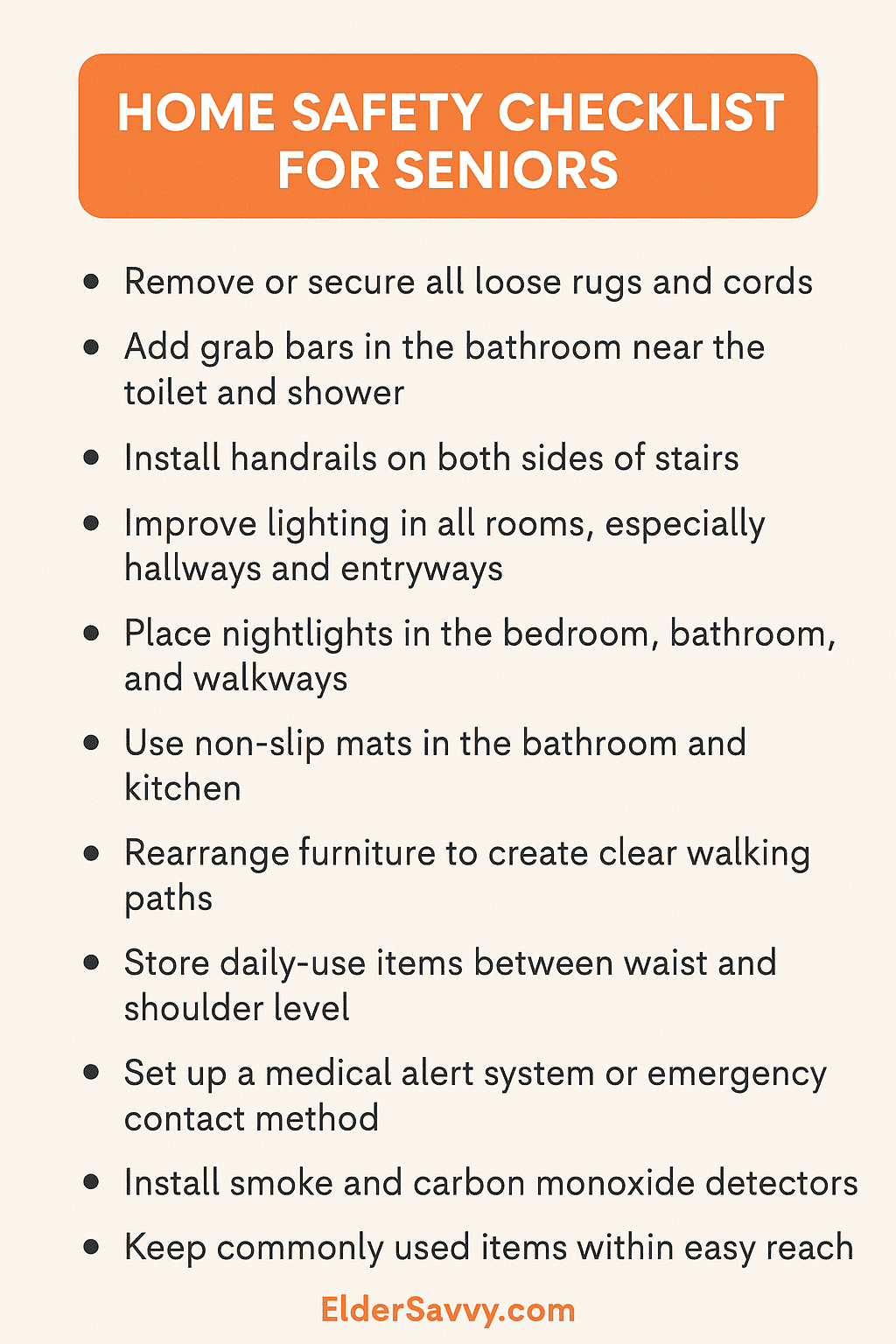
Use this checklist as a quick guide to make sure your home is safer and easier to navigate for older adults:
- Remove or secure all loose rugs and cords
- Add grab bars in the bathroom near the toilet and shower
- Install handrails on both sides of stairs
- Improve lighting in all rooms, especially hallways and entryways
- Place nightlights in the bedroom, bathroom, and walkways
- Use non-slip mats in the bathroom and kitchen
- Rearrange furniture to create clear walking paths
- Store daily-use items between waist and shoulder level
- Set up a medical alert system or emergency contact method
- Install smoke and carbon monoxide detectors
- Keep commonly used items within easy reach
- Schedule a professional home safety evaluation if needed
Final Words
Creating a safer home for elderly loved ones doesn’t require a full renovation, just thoughtful adjustments.
By focusing on fall prevention, improving lighting, and making key areas like the bathroom and stairs more accessible, you can significantly reduce risks and support independent living.
Whether it’s adding grab bars or removing trip hazards, small changes today can lead to greater peace of mind and comfort tomorrow.
FAQs
What is the most common cause of falls in seniors?
The most common cause of falls in seniors is tripping on flat surfaces, often due to loose rugs, poor lighting, or cluttered walkways. Bathrooms and stairs are particularly high-risk areas.
Are home safety upgrades expensive?
Many safety upgrades are affordable. Simple changes like installing grab bars, using non-slip mats, or adding better lighting can cost less than $100 in total.
Can I get help paying for these changes?
Yes, some Medicare Advantage plans, VA benefits, or local aging agencies may cover or subsidize home safety modifications. Nonprofits and fall prevention programs also offer support in some areas.
Is a medical alert system worth it?
Yes, a medical alert system provides quick access to help in an emergency, especially after a fall. Many systems include fall detection and GPS tracking for added peace of mind.
Lauren brings 8+ years of writing experience focused on accessibility, home organization, and senior living. Her practical guides are shaped by conversations with seniors and caregivers, helping readers simplify daily tasks with clarity and confidence.

